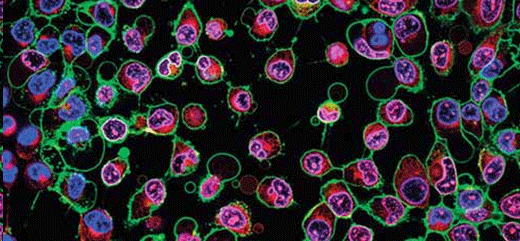|
NOVIDADES
In the past six years, the National Research Programme “Opportunities and Risks of Nanomaterials” (NRP 64) intensively studied the development, use, behaviour and degradation of engineered nanomaterials, including their impact on humans and on the environment. Twenty-three research projects on biomedicine, the environment, energy, construction materials and food demonstrated the enormous potential of engineered nanoparticles for numerous applications in industry and medicine. Thanks to these projects we now know a great deal more about the risks associated with nanomaterials and are therefore able to more accurately determine where and how they can be safely used. “One of the specified criteria in the program was that every project had to examine both the opportunities and the risks, and in some cases this was a major challenge for the researchers," explains Peter Gehr, President of the NRP 64 Steering Committee. One development that is nearing industrial application concerns a building material strengthened with nanocellulose that can be used to produce a strong but lightweight insulation material. Successful research was also carried out in the area of energy, where the aim was to find a way to make lithium-ion batteries safer and more efficient.  Gold nanoparticles are absorbed by dendritic cells.
The examination of potential health risks was the focus of NRP 64. A number of projects examined what happens when nanoparticles are inhaled, while two focused on ingestion. One of these investigated whether the human gut is able to absorb iron more efficiently if it is administered in the form of iron nanoparticles in a food additive, while the other studied silicon nanoparticles as they occur in powdered condiments. It was ascertained that further studies will be required in order to determine the doses that can be used without risking an inflammatory reaction in the gut. One of the projects established that 95 per cent of silver nanoparticles that are washed out of textiles are collected in sewage treatment plants, while the remaining particles end up in sewage sludge, which in Switzerland is incinerated. In another project a measurement device was developed to determine how aquatic microorganisms react when they come into contact with nanoparticles. The importance of standardised characterisation and evaluation of engineered nanomaterials was highlighted by the close cooperation among researchers in the programme. “The research network that was built up in the framework of NRP 64 is functioning smoothly and needs to be further nurtured,” says Professor Bernd Nowack from Empa, who headed one of the 23 projects. The results of NRP 64 show that new key technologies such as the use of nanomaterials need to be closely monitored through basic research due to the lack of data on its long-term effects. As Peter Gehr points out, “We now know a lot more about the risks of nanomaterials and how to keep them under control. However, we need to conduct additional research to learn what happens when humans and the environment are exposed to engineered nanoparticles over longer periods, or what happens a long time after a one-off exposure.” Swiss National Science Foundation. Posted: Apr 06, 2017. |
|||||||||||||||||||||||||